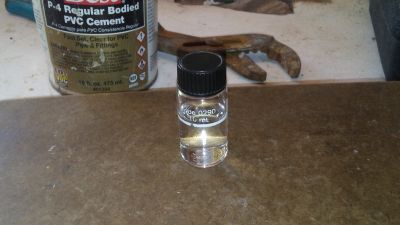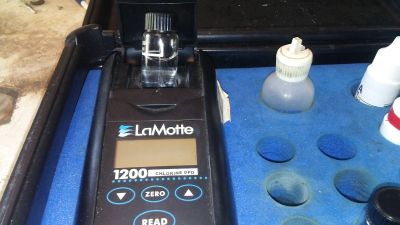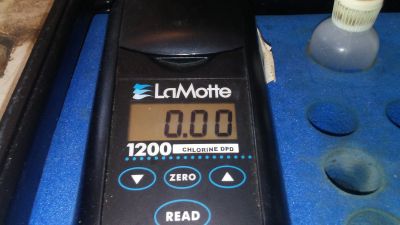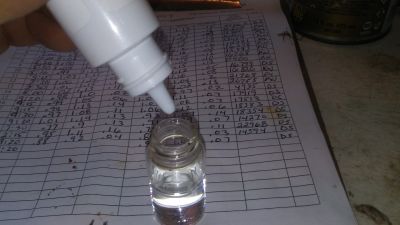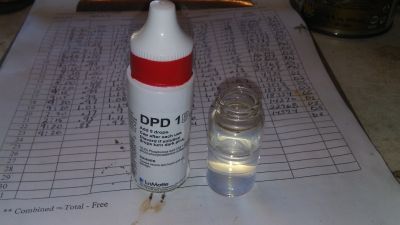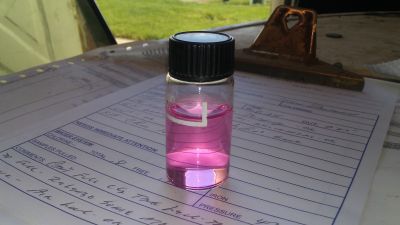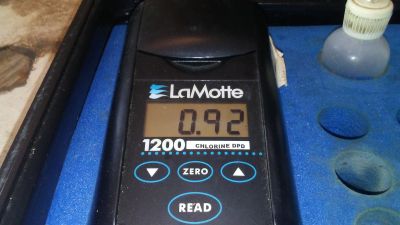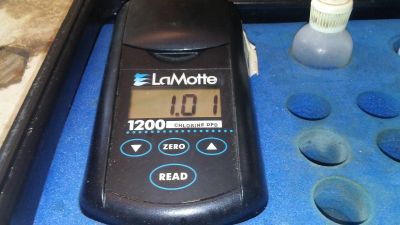Difference between revisions of "Testing A Drinking Water System"
| Line 5: | Line 5: | ||
The following article illustrates the correct procedure to test processed water for chlorine levels that fall within the EPA regulations. | The following article illustrates the correct procedure to test processed water for chlorine levels that fall within the EPA regulations. | ||
==Step 1== | |||
The first step is to obtain a clean sample from the distribution point. 10 ml of water for the first sample is collected from a spigot within the pump facility after that spigot has run for at least ten minutes. This length of time is to ensure that old water is purged from the system and that a new, "fresh" sample can be collected. | The first step is to obtain a clean sample from the distribution point. 10 ml of water for the first sample is collected from a spigot within the pump facility after that spigot has run for at least ten minutes. This length of time is to ensure that old water is purged from the system and that a new, "fresh" sample can be collected. | ||
[[File:water test 1.jpg|center|400px]] | [[File:water test 1.jpg|center|400px]] | ||
==Step 2== | |||
Next, the testing machine must be "zeroed out" to provide a baseline amount of chlorine in the water. The machine scans the water with a laser to get a control sample. | Next, the testing machine must be "zeroed out" to provide a baseline amount of chlorine in the water. The machine scans the water with a laser to get a control sample. | ||
[[File:water test 2.jpg|center|400px]] | [[File:water test 2.jpg|center|400px]] | ||
==Step 3== | |||
Now that the testing machine has been zeroed, chemicals must be added to the water to provide the "Free" chlorine test results. | Now that the testing machine has been zeroed, chemicals must be added to the water to provide the "Free" chlorine test results. | ||
[[File:water test 3.jpg|center|400px]] | [[File:water test 3.jpg|center|400px]] | ||
==Step 4== | |||
Five premeasured drops of DPD 1A are added to the water sample. This test will give the testing machine the results for the "Free" chlorine and will use two separate testing agents to provide those results. DPD 1A is the first agent. | Five premeasured drops of DPD 1A are added to the water sample. This test will give the testing machine the results for the "Free" chlorine and will use two separate testing agents to provide those results. DPD 1A is the first agent. | ||
[[File:water test 4.jpg|center|400px]] | [[File:water test 4.jpg|center|400px]] | ||
==Step 5== | |||
Five premeasured drips DPD 1B are then added. | Five premeasured drips DPD 1B are then added. | ||
[[File:water test 5.jpg|400px]] | [[File:water test 5.jpg|400px]] | ||
Revision as of 18:50, 21 March 2022
Small municipalities, home owner associations, apartment complexes, and other communities that do not purchase their water from a water company will often times pump and treat their own water from wells. This water supply must be chemically treated before it is distributed to residents and the treatment is closely monitored by both the EPA and the people administer the water system itself.
This monitoring is usually done by Testing the Drinking Water System for chlorine. A mandated level of chlorine must be maintained at all times within the water system (pressure tanks, underground pipes, etc) or that water system is considered "in violation" of EPA regulations. If a water system falls into a violation category, steps must be taken to bring the system back into regulated chlorine levels.
The following article illustrates the correct procedure to test processed water for chlorine levels that fall within the EPA regulations.
Step 1
The first step is to obtain a clean sample from the distribution point. 10 ml of water for the first sample is collected from a spigot within the pump facility after that spigot has run for at least ten minutes. This length of time is to ensure that old water is purged from the system and that a new, "fresh" sample can be collected.
Step 2
Next, the testing machine must be "zeroed out" to provide a baseline amount of chlorine in the water. The machine scans the water with a laser to get a control sample.
Step 3
Now that the testing machine has been zeroed, chemicals must be added to the water to provide the "Free" chlorine test results.
Step 4
Five premeasured drops of DPD 1A are added to the water sample. This test will give the testing machine the results for the "Free" chlorine and will use two separate testing agents to provide those results. DPD 1A is the first agent.
